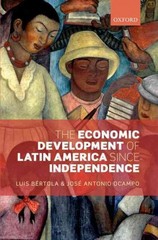Hey tutor, Please
Consider a pure exchange economy with two consumers and two goods. Each consumer has the following utility function: Exchange Economy Consider a pure exchange economy with two consumers, i=1,2 and two goods. The consumers' utility functions are given by U(x,,x, )=(Xi-)(x; ) and endowments are given by wi=(a;, b; ) for i=1, 2. Let p denote the relative price of good 1 in terms of good 2 al Compute the excess demand function for this economy. b) Define a competitive equilibrium for this economy. c) Find the equilibrium price ratio.Given the real outputs, population, capital, the share of household consumption at current PPPs(at current PPPs means that we are keeping prices constant over time and comparable between countries so you don't need to worry about inflation) Assume that the production function of your country at period t is given by Y (t) = A(t)K(t)^a L(t)^1-a, where a = 0.3, Y is output, K is capital, L is labor, and A is the technological level of the country. Assume for now that A(t) = 1 in any period. Also, assume that the depreciation rate of capital is 0 = 0.01. 1. Assuming that all output not consumed is saved how to calculate the average (overall years) saving rate in that country ( just give a formula) 2. How to calculate the steady-state level of capital and output per capita. ( just give a formula) 3. How to calculate the modified golden rule of this economy. ( just give a formula)QUANTITATIVE ECONOMIC - EDGEWORTH BOXPLOT: PLEASE ANSWER FULLY AND COMPLETELY Consider a two-consumer, two-good exchange economy. Consumer A has utility function UA(r) , ? ) - (x'A)(ra)' and endowment WA = (4,0). Consumer B has utility function UB(FB, D3) = 5 and en- dowment WB = (0,4). Normalize pi = 1 and let the price of good 2 be p2. a) Write demand functions for consumer A in terms of prices. b) Thus find a competitive equilibrium in which 21 = 1. P2 c) Show with an example that the competitive equilibrium in b) is not Pareto efficient. d) Why does the first welfare theorem fail to hold in this economy?3. Optimal Input Mix. Standard Enterprises produces an output that it sells in a highly competitive market at a price of $100 per unit. Its inputs Include two machines which cost the firm $50 each and workers, who can be hired on an as-needed basis in a labor market at a cost of $2,800 per worker. Based on the following production data, how many workers should the firm employ to maximize its profits? Machines Workers Marginal Product Average Product VALUE Marginal (M) (L) Output of Labor [MP.) of Labor (AP.) Product* [VMP.) Wage 0 $2,800 2 1 60 $2,800 2 2 100 $2, B00 2 3 129 $2,800 2 A 148 $2,800 5 160 $2,800 6 168 $2,800 A. Fill in the missing data for marginal product of labor (MP), average product of labor (AP ) and Value marginal product of labor (VMP.). B. What is the profit maximization optimal input mix condition (rule) for this problem? C. Based on the above production data, how many workers should the firm employ to maximize its profits? 4. A firm can manufacture a product according to the following production function: Q = F( K, L) = K' L+ Where Q = output K= capital L = labor Calculate the average product of labor (APx)) and Marginal Product of labor ( MPL) when capital is fixed at 80 and labor is 35.11. Consider an economy with 2 firms and 2 consumers. Firm i is owned by consumer i(= 1, 2). Firm 1 produces virtual reality machines (VRMs) using oil via the production function v = 2x. Firm 2 produces bread via the production function b = 3x. Consumer 1 has utility function U'(v1 ) = 100 + 4v.4 and has an endowment of 10 units oil. Consumer 1 has utility function U2(v2) = 10u, and has an endowment of 10 units of oil too. a. Determine the input demand and output supply functions for the two firms











